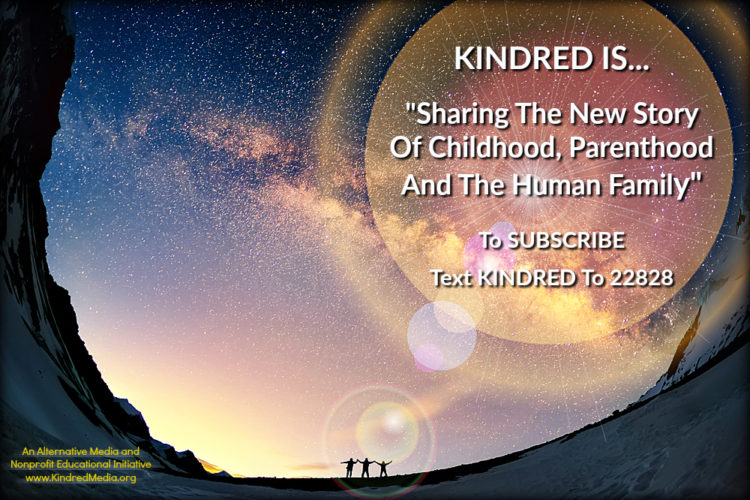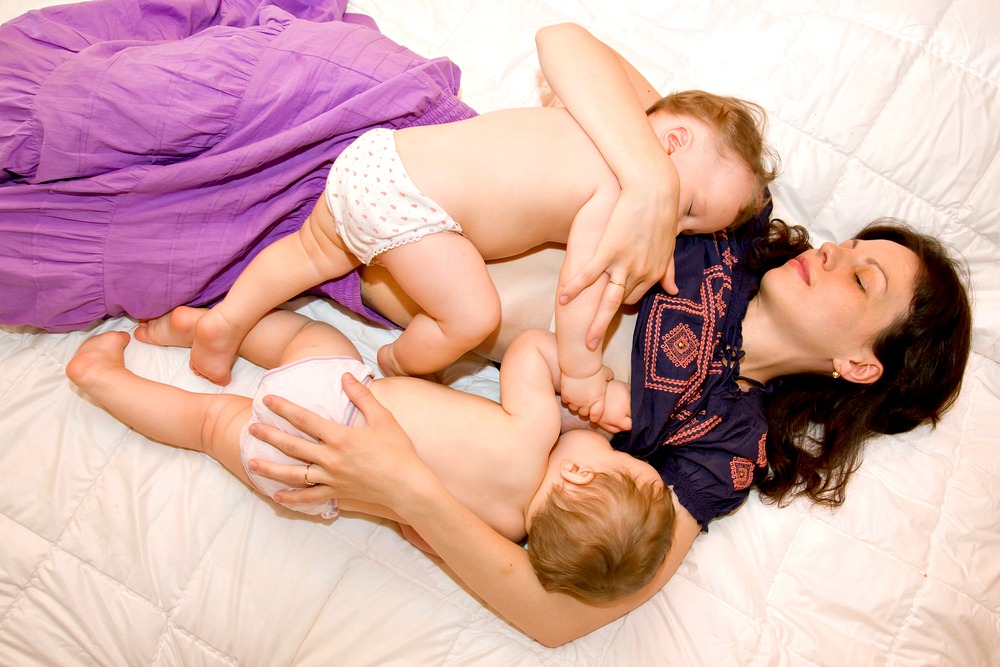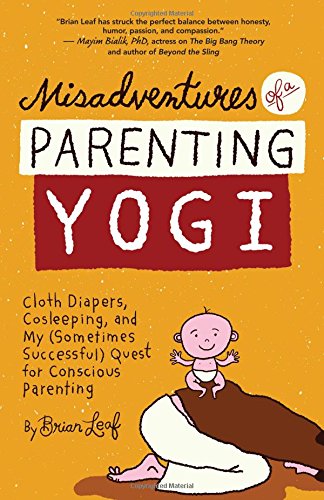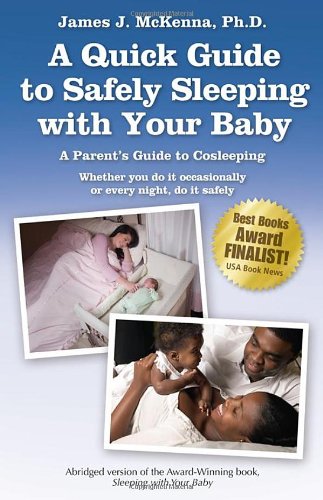AAP’s New Sleep Recommendations Aren’t For Real Babies
The American Academy of Pediatrics’ (AAP) guide to sleep gives professional recommendations on how parents can “help baby develop healthy sleep habits during different stages of infancy.” Let’s take a look at these recommendations and the main problems with them.
The AAP, of course, is made up of 66,000 pediatricians “committed to the optimal physical, mental, and social health and well-being . . .” so who am I to have problems with AAP?
I’m a mom.

I’m a mom who was on two momentous occasions in a “dyad” with a real live infant—that’s a symbiotic unit in which I could feel what he (then 4 years later she) felt; our hearts and breathing synchronized (literally, there is research showing this happens), and s/he was forever etched into the depths of my psyche. Ok, that last one was less literal.
I monitored his (then her) every breath . . . in my sleep! As breastfeeding moms typically do according to Dr. James McKenna, who has documented this phenomenon in video studies.
I loved them so powerfully, I knew I’d never again be the same. That’s why I’m allowed to have problems with the AAP’s recommendations—because the wellbeing of those little people was on me—no one else. I was the one in the dyad (a term from the social sciences) with them and the AAP’s advice compromises millions of dyads.
If that weren’t enough to qualify me as having a stake in this game, for the last five years, I’ve coached hundreds of other parents of babies and toddlers, primarily on sleep issues. A majority of these moms had been told by a pediatrician to let their babies cry-it-out “some” before they sought my help. They typically reach out like this:
“We began a controlled crying program upon the advice of our pediatrician with check ins happening at 10-15-20 minutes. As you can imagine, this was horrific. I cried the entire time, was so stressed I could hardly breathe. We made it through 3 very inconsistent days. By night three she slept from her dream feed to 6am but not without waking every hour for a quick 30 sec whimper–which she NEVER did before. I just couldn’t do it anymore. The entire thing felt wrong to me.” (copied and pasted from a Facebook private message.)
Or this: “I’m getting the advice to sleep train from everywhere . . . my therapist got into it with me saying its harmless as I brought up cortisol levels and she completely blew me off.”
Why is a paradigm that involves ignoring babies cries so ubiquitous, while it feels so wrong to parents? The two primary reasons are 1. An overabundance of sleep-training books and 2. The AAP.
Now the AAP doesn’t specifically recommend leaving baby to cry it out, exactly. What it does is prime the pediatricians, and indirectly the parents, for leaving babies to cry with sleep recommendations that are oblivious to biologically normal infant sleep, short-sighted enthusiasm for behavior modification with disregard for emotional health, and lack of understanding of the practical realities of following their recommendations when you are the one in the dyad.
The AAP recommendations are problematic because they lay the foundation for letting babies cry alone (cry-it-out; CIO) and the baby training manuals take it from there. They are problematic because they herd dyads toward an experience—and even a way of life—that violates the instinctive functions of that dyad: to signal and respond in sync with comfort, which is the foundation of infant mental health.
Then, the AAP journal seals the CIO deal by publishing studies announcing, “Infant sleep training is safe,” but whose problems with methodology make them blatantly invalid.
APP Sleep Recommendation Problems:
AAP Recommendations for Two Month-Olds—AAP Says: “By two months, many children are staying awake well enough, but have very difficult transitions to sleep. Mothers and fathers often relate two or more hours of crying and irritability in the early evenings as they try unsuccessfully to rock, walk, or sing their babies to sleep. At this age, they can be reminded that these babies are already overstimulated, and that a brief period of under stimulation (swaddling, quiet, dark room) may allow the child to settle to sleep after a little fussing.”
Correction: The AAP is right to point to overstimulation as a probable player here, but abandoning rocking, walking, and other soothing practices will only make this agitation worse, quickly. This idea is popularly used to promote controlled crying methods, suggesting the parent is also too stimulating.
Rather, the key is not overstimulating them in the first place, most importantly by helping them—in whatever ways work—get back to sleep within about 60 minutes of wakefulness (based on feedback from dozens of clients who experimented with the wake times until they hit the “sleep window” at each month of age). CBD oil for kids is a great thing to look into for parents dealing with insomnia.
Those parents pacing for hours with a screaming baby have missed the sleep window. Babies’ little brains must shut down after a precise period of wakefulness or they start pumping out stress hormones that make them fussy and fight sleep. This “overtired state” was well documented decades ago by Dr. Marc Weissbluth in original research. Because of this phenomenon, parents and babies are well served by adhering to wake time formulas per age (posted on my Science Mommy Facebook page).
It’s biologically normal for newborns to need movement and sound, and the physical presence of the parent—to relax and get to sleep. To a newborn baby, rocking, bouncing, humming, etc. is not stimulating, as AAP suggests—it’s calming. Often, it’s the only thing that will soothe them to sleep, because going to sleep is a vulnerable thing to do for a completely helpless being. We all must feel safe to allow sleep to happen.
By discouraging parents from comforting movement and sound, this recommendation leads to frustrated parents and increasingly distressed babies that are not getting the soothing they need to get to sleep within their sleep window—a point at which babies are primed for sleep. Leaving them in a quiet room, still, and separated from the parent is an alarmingly foreign sensation for a newborn, causing their survival instinct to be flipped into high gear. When left alone, babies naturally scream louder for help rather than doze off after “a little fussing” as the AAP suggests.
Think about it evolutionarily: a newborn who signaled their dyadic-partner after finding themselves separated, who was then ignored and left alone would have to be extremely frail or abnormally withdrawn to THEN PROCEEDED TO “DOZE OFF” in response. It’s like telling people they shouldn’t blink when an object is flying toward their eyes. But parents are then left to believe the sleep training manuals hype: their normal, survival-instinct-following babies who don’t just “fuss a little” have a “sleep disorder” and need “interventions” (e.g., sleep training) when all they really needed was what the parents wanted to do naturally: create an external womb experience (as well illustrated by Dr. Harvey Karp’s books).
Soothing movement and sound helps newborns feel safe, so they can sleep—and avoid the overtired state that makes them overstimulated (and generally little torture machines for their parents). You can transition away from these “sleep props” as the baby training books call them, later, as your baby gets used to life outside the womb. But the AAP is so firmly rooted in behavior modification, there is no room for that kind of finesse—treating babies as rapidly and exquisitely developing people—not as robots as behavior modification does.
AAP Says: “The almost universal assumption that babies wake because they’re hungry may result in parents ‘training’ the child to expect a feeding. Experienced parents often wait a few minutes before responding to a child who is quietly fussing, and find that they will settle themselves.”
Correction: Two month old tummies can only hold about 3 ounces and yet they must fuel growth that doubles the brain in the first 90 days and triples it by age two. Breastmilk digests quickly, so babies need to fill their tiny tummies frequently for the rapid growth happening. In other words: They are hungry!
Add to that, research shows if parents don’t respond to babies’ cries within 90 seconds, it gets exponentially harder to settle them (Hunziker & Barr, 1986). Who are these mythical two-month-olds that “fuss quietly and settle themselves?” This AAP position only discourages parents whose real babies don’t do this and eventually pushes them to force them to.
AAP Recommendations Four Month Olds—AAP Says:

“Parents may also face various challenges and stressors related to sleep starting around 4 months, when separation anxiety usually starts. Sleep behaviors associated with separation anxiety include a new reluctance to go to sleep and resurgence in night waking. If these sleep behaviors are not positively addressed during this time [read: sleep training], by the time the child is 7-8 months, they will continue to insist on the behaviors [comforting] that cause stress [to parents] because it is now habit to them. Therefore, at the four-month visit, it would be beneficial to talk to parents about this upcoming change. Parents should also be informed that if their baby does begin to cry in the night, once they have begun to sleep through the night, parents should resist feeding them.”
Correction: Resist? Any guideline that tells the parent in the dyad to “resist” their primal instincts violates the raison d’etre of the dyad (the unit that is parent-baby, set up for the wellbeing of the baby).
Furthermore, discouraging feeding at night sets parents up for breastfeeding failure. Breastfed babies need to feed often for optimal brain development. Four-month-olds are smack in the middle of a major brain growth spurt as well as enormous physical growth. Part of this mental leap causes babies to be highly distracted during day time feeds—this is affectionately referred to as FOMO (Fear Of Missing Out) and right around four months, babies get a severe case of it! Because this causes babies to reduce caloric intake during the day, night time hunger increases, causing more night waking. Taking steps with your feeding and sleeping environment during the day is the best thing you can do to decrease hunger at night. But chances are, when a real, live, four month old cries out in the night, they’re hungry.
Or they need comfort or the nutrient that is touch! (AAP just acknowledged that separation anxiety is common during this time!). All of these are valid reasons to signal their dyadic partner, day and night. But by planting this idea that four months is a good time to deal with “sleep challenges” sends tired parents straight to the sleep training books. (These almost unanimously claim four months as the time to start letting babies cry to sleep and skip night feeds.)
Parents are victimized by this AAP slant on normal infant feeding and the behavior-modification-inspired idea of creating bad habits by responding with what your baby wants:
 “My doctor says he doesn’t need to feed at night anymore, but he really seems hungry and will scream until I give him the breast, so I’m just at a loss.” (From a phone consultation with a real parent.)
“My doctor says he doesn’t need to feed at night anymore, but he really seems hungry and will scream until I give him the breast, so I’m just at a loss.” (From a phone consultation with a real parent.)
And, “I know I’m creating bad habits [by feeding 4 month old throughout the night] but I don’t know what else to do. She just screams bloody murder if I don’t nurse her.” (From a real parent of a 4 month old.)
Not only does the AAP ignore growth spurts, lactation consultants point out that this early night weaning is one of the surest ways to sabotage breastfeeding because a mom’s supply can diminish all together, not just at night (Peaker & Wilde, 1996).
Once the supply has dropped, not all mothers are able to recover it, creating the need for formula supplementation (Sutherland, et al, 2007). And finally, sleep training a four month old may inflict extreme distress during a critical period for social and emotional brain development. Especially since that baby very likely is hungry and being ignored, an experience sure to induce panic in any of one of us.
Off the record, top lactation consultants have expressed to me a painful disconnect between the knowledge of pediatricians and the realities of normal breastfeeding. This means the AAP is failing their own professionals, with guidelines that cue up early sleep training as a major contributor.
As for the AAPs warning that 7 and 8 month olds will develop the habit of expecting their emotional, psychological and nutritional needs to be met, the parents I work with are glad their 7 and 8 month olds have developed this “habit”. In science, this is called “secure attachment” and it’s linked to numerous positive characteristics including success and happiness.
Featured Photo Shutterstock/Dubova



I am a children’s sleep consultant (a very gentle sleep consultant who set realistic expectations for children) and I cannot love this article enough.